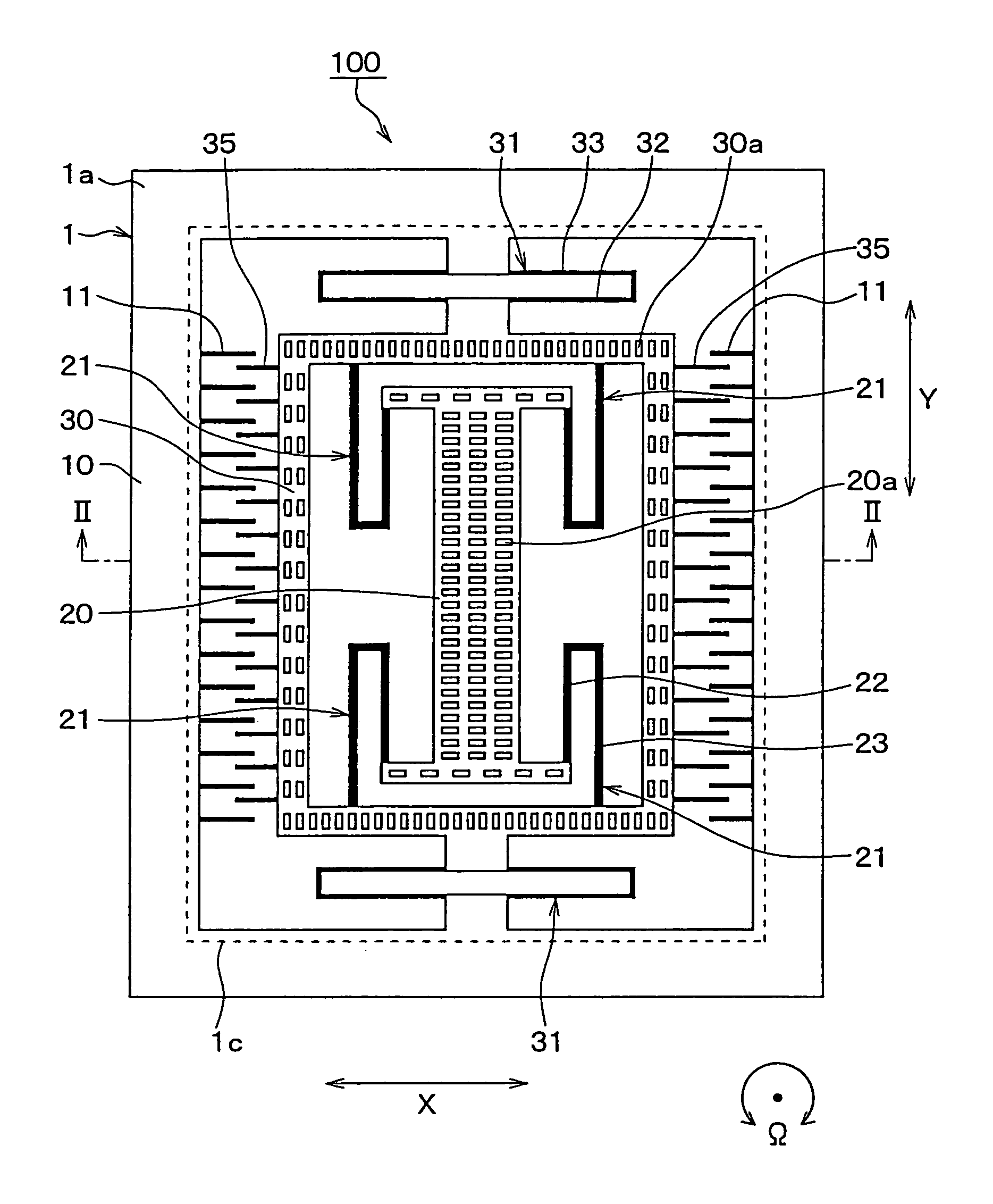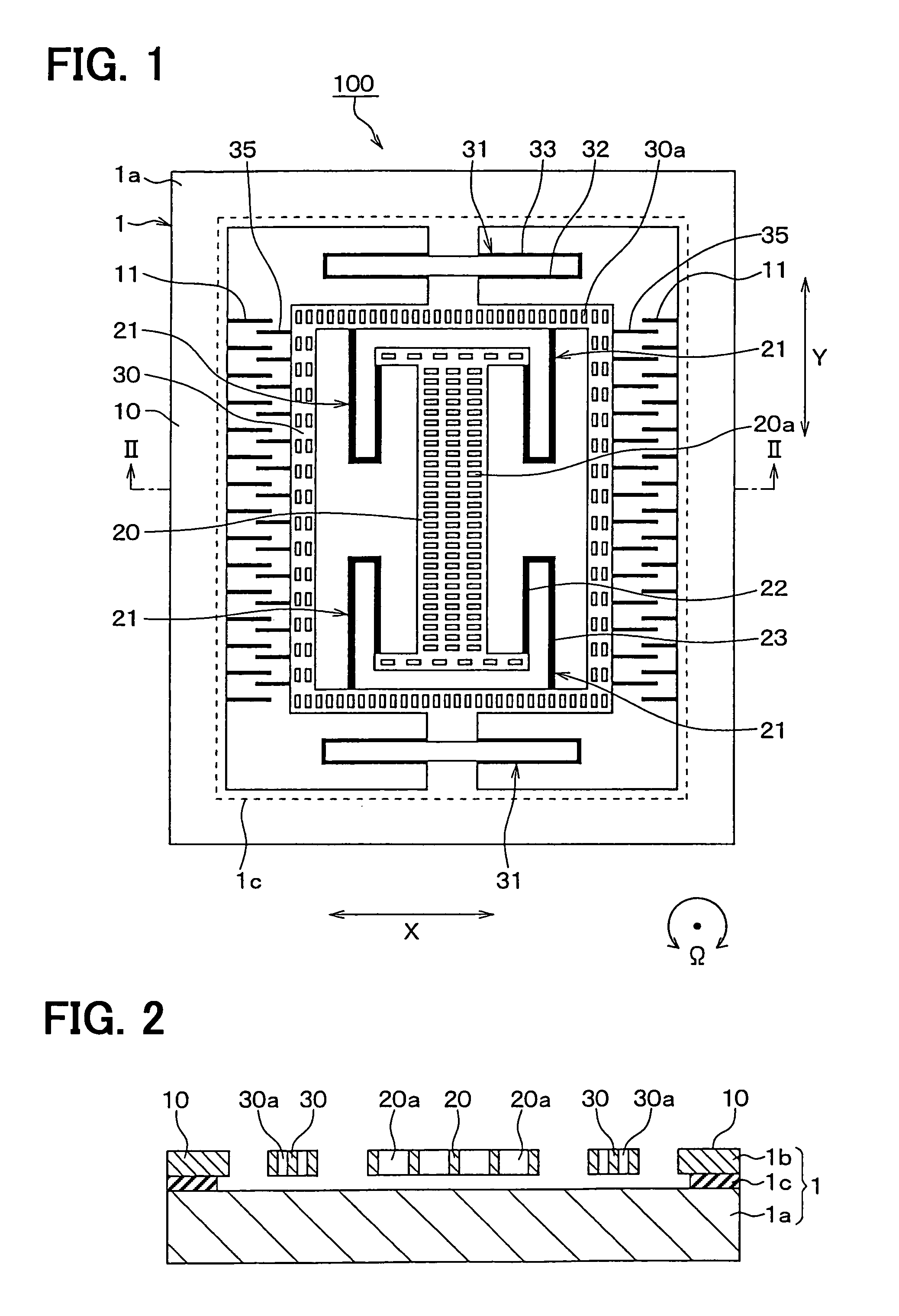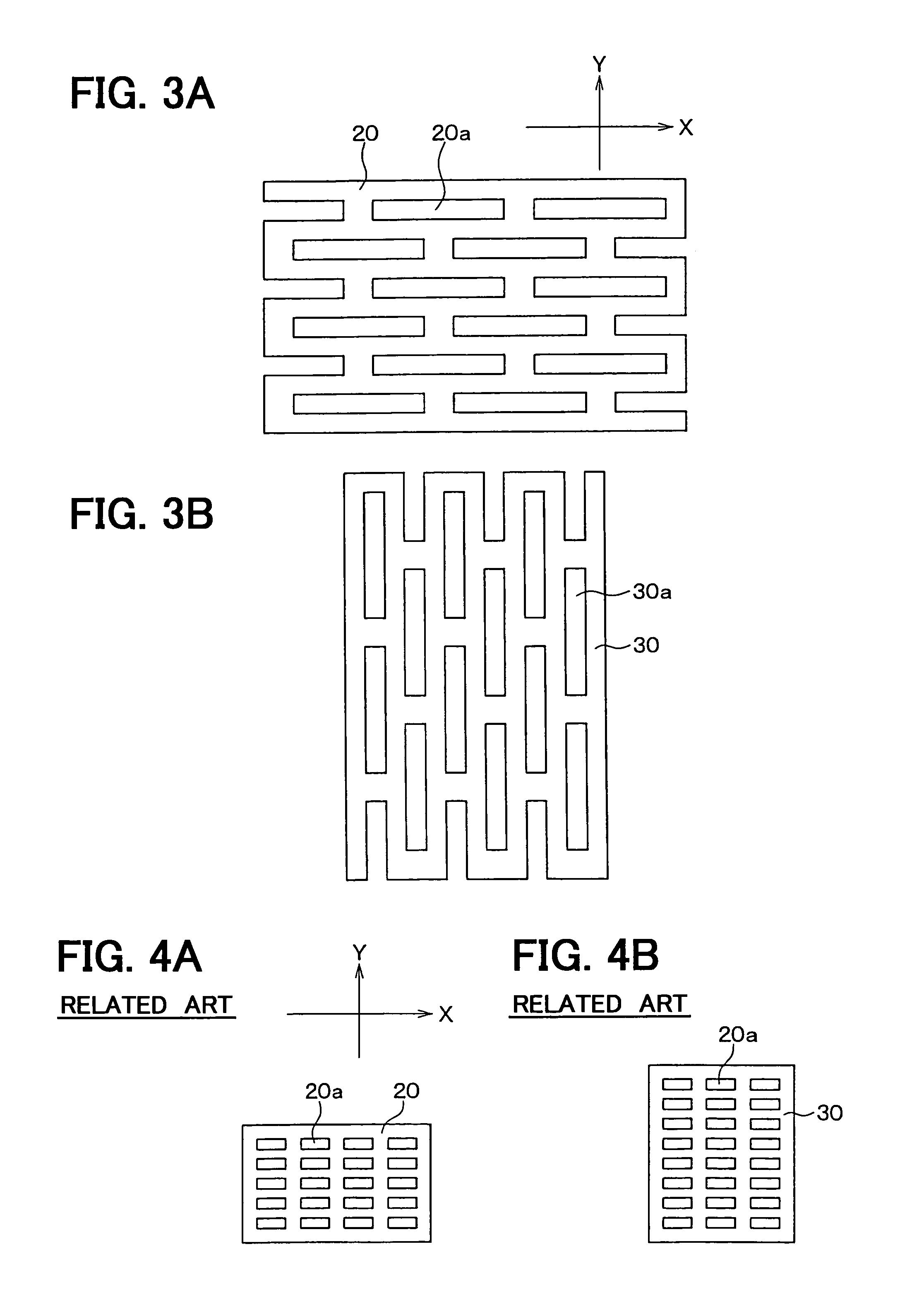Physical quantity sensor having movable portion
a technology of physical quantity sensor and movable portion, which is applied in the direction of shock absorbers, instruments, turn-sensitive devices, etc., can solve the problems of loss of vibration energy, risk, and adverse influence of sensor characteristics, and achieve stable vibration and high accuracy
- Summary
- Abstract
- Description
- Claims
- Application Information
AI Technical Summary
Benefits of technology
Problems solved by technology
Method used
Image
Examples
first embodiment
[0037]FIG. 1 is a diagram for schematically representing a plane structure of an angular rate sensor 100 according to a first embodiment mode of the present invention. FIG. 2 is a sectional view for schematically showing the angular rate sensor 100, taken along a dot and dash line II-II shown in FIG. 1.
[0038]FIG. 3A is an enlarged plan view for indicating a through hole 20a formed in a drive-purpose vibration unit 20 shown in FIG. 1, and FIG. 3B is an enlarged plan view for showing a through hole 30a formed in a detection-purpose vibration unit 30 shown in FIG. 1.
[0039]This angular rate sensor 100 is manufactured by processing a semiconductor substrate 1 made of a silicon substrate, or the like.
[0040]A structural body is segmented and formed in the semiconductor substrate 1 by forming trenches in this semiconductor substrate 1 by employing a well-known semiconductor manufacturing technique such as an etching process, as shown in FIG. 1, while the structural body includes a frame-sha...
second embodiment
[0080]FIG. 5 is a diagram for schematically representing a plane structure of an angular rate sensor 200 as a mechanical quantity sensor according to a second embodiment mode of the present invention. FIG. 6 is a sectional view for schematically showing the angular rate sensor 200, taken along a dot and dash line VI-VI shown in FIG. 5.
[0081]This angular rate sensor 200 is manufactured by processing the semiconductor substrate 1 made of a silicon substrate, or the like.
[0082]The structural bodies are segmented to be formed in the semiconductor substrate 1 by forming trenches in this semiconductor substrate 1 by employing a well-known semiconductor manufacturing technique such as an etching process, as shown in FIG. 5, while the structural bodies are constituted by the base unit as a frame-shaped peripheral fixing unit 10 functioning as a fixed portion; anchor units 211 and 212; a detecting electrode-purpose fixing unit 213; and further, movable units 20 and 30, etc. The anchor units ...
PUM
 Login to View More
Login to View More Abstract
Description
Claims
Application Information
 Login to View More
Login to View More - R&D
- Intellectual Property
- Life Sciences
- Materials
- Tech Scout
- Unparalleled Data Quality
- Higher Quality Content
- 60% Fewer Hallucinations
Browse by: Latest US Patents, China's latest patents, Technical Efficacy Thesaurus, Application Domain, Technology Topic, Popular Technical Reports.
© 2025 PatSnap. All rights reserved.Legal|Privacy policy|Modern Slavery Act Transparency Statement|Sitemap|About US| Contact US: help@patsnap.com



